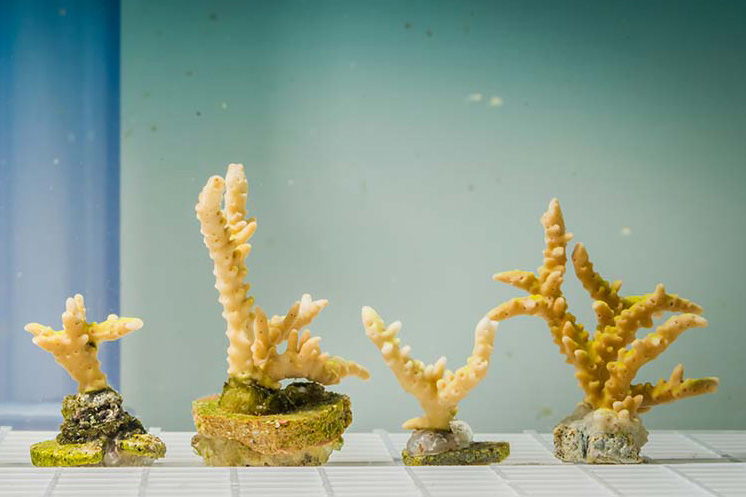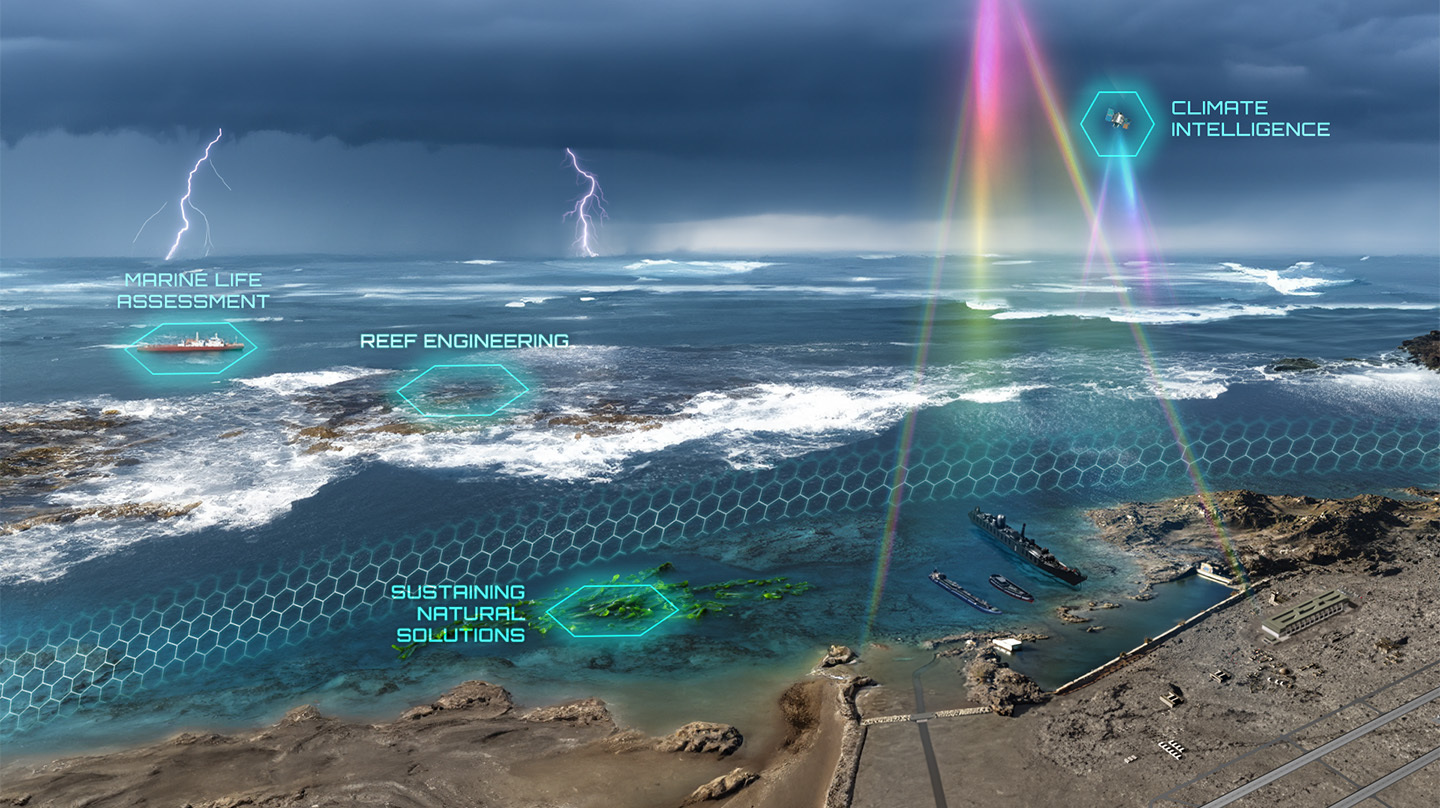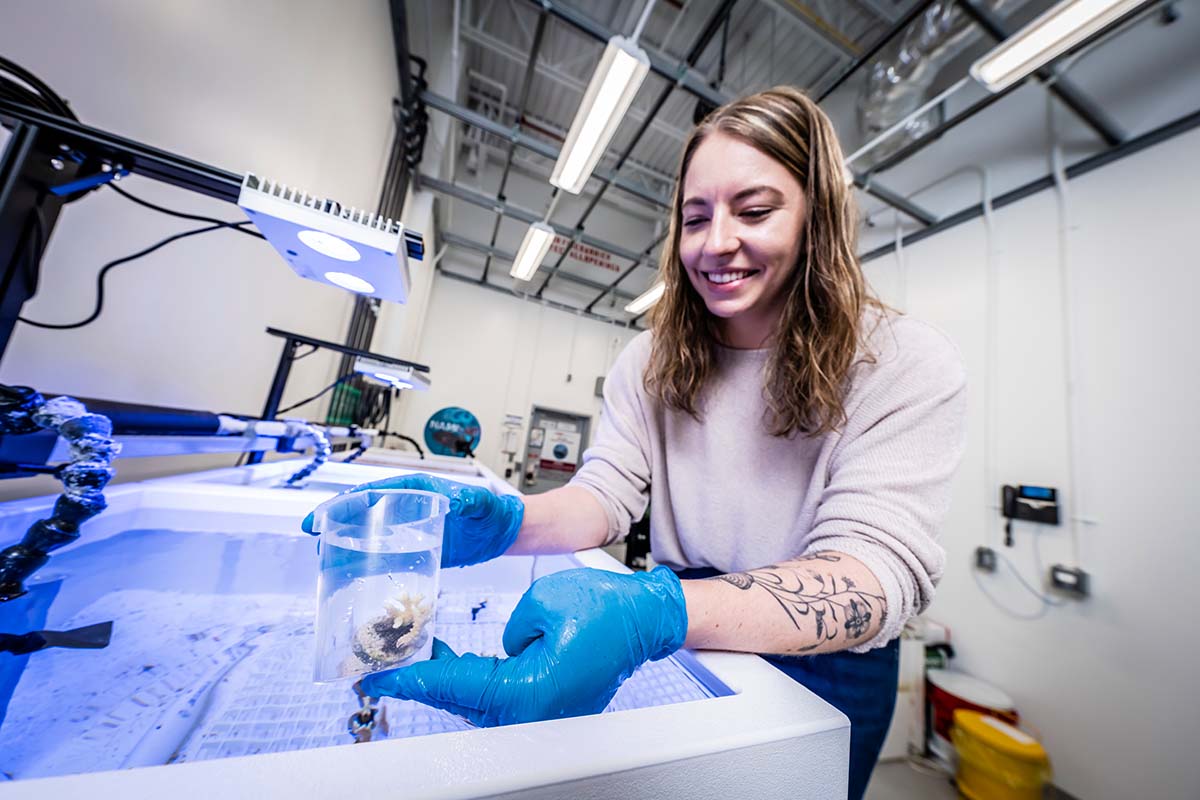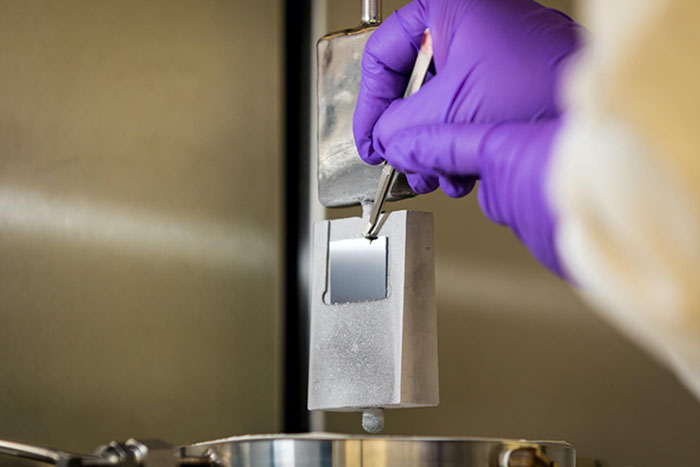Our Contribution
Coral reefs are critical for mitigating the effects of rising sea levels, serving as natural barriers to protect shorelines from waves, storm surges, and erosion. Yet worldwide, they’re disappearing. In the U.S., experts predict that within the next 30 years, the sea level along the coastline will rise an average of 10–12 inches and cause a profound shift in coastal flooding. At risk is much of the infrastructure and many of the communities, resources, and ecosystems on which our nation relies. Recognizing the need to safeguard America’s coastlines and the value natural structures play in their protection, researchers at APL are finding ways to use materials science to support coral reef growth and restoration. Teams at APL are working in parallel to develop methods to support coral settlement, reverse coral loss, and improve coral thermal resilience. A previous collaboration with the University of Miami for the Defense Advanced Research Projects Agency’s Reefense program aimed to develop a unique biocompatible hydrogel that could adhere to underwater structures. As coral larvae spawned, the team encapsulated the new larvae into the protective gel and attached them directly to artificial structures underwater. The hydrogel provided a method to deliver nutrients and support the coral until they became self-sustaining. In a separate internally funded project, APL biologists are developing a food additive material that would stop coral polyps from expelling their symbiotic algae during a heat wave. The additive delivers a snippet of genetic material to adult coral to mitigate coral bleaching. This messenger RNA, or mRNA, blocks chemical stress signals and acts like a vaccine against heat stress.






